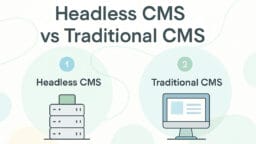Workflow complexity in the contemporary business is increasing exponentially. Classical automation tools do a good job with single tasks; however, the business requires something smarter, a means of linking systems, making decisions automatically, and dynamically adjusting to business dynamics.
Intelligent Process Orchestration (IPO) is a solution that helps satisfy this requirement by automating, automating through AI, and automating with real-time decision-making to optimize enterprise processes, end-to-end. The strategy can assist organizations to cut expenses, increase productivity, enhance compliance, and offer better customer experiences.
What is Intelligent Process Orchestration?

Intelligent Process Orchestration refers to the application of AI-powered orchestration to automate and integrate whole workflows in multiple systems, departments, and apps.
IPO is a new, sophisticated form of automation that extends beyond task automation. It consists of a combination of robotic process automation (RPA), artificial intelligence (AI) agents, and orchestration platforms to organize the workflows in an intelligent manner. This implies that IPO does not automate single steps, but rather shares a complete process flow, or rather a start and finish process, where all of the steps are carried out with minimum human intervention, and decisions can be made in real-time.
For example, invoice processing, payment approval, and account reconciliation in finance may be linked in one coordinated workflow: IPO.
How Does Intelligent Process Orchestration Work?
The IPO links systems of discrepancy and automatization of decisions through AI, API, and orchestration engines, which control workflows in real time.
At its core, IPO involves three layers:
- Integration Layer – the process of linking various systems of the enterprise to each other (CRM, ERP, HRIS, and customer support platforms) with the help of APIs and integration tools.
- Orchestration Layer – organizing the workflow execution, task routing, and decision-making based on defined guidelines and artificial intelligence.
- Execution Layer – at this level, RPA bots and AI agents execute some tasks, which can be document processing, notification, or record updates.
The orchestration layer is the brain, and the integration and execution layers are the body, which allows businesses to execute complex workflows in time and with accuracy.
Example of IPO in Action
An international insurance firm had serious problems in its claims processing activities, such as delays caused by manual checks, disintegrated systems, and claim volumes that needed compliance checks. In order to solve this, the firm introduced the Intelligent Process Orchestration (IPO) to change the whole process of claims.
- Integration: The IPO system linked various enterprise systems, which included policy management software, CRM platforms, document management systems, and payment gateways. With this integration, data flow among the different departments was made easy, avoiding manual entry of data and allowing the availability of all the information in real time.
- Orchestration: The orchestration layer played the role of the brain of the system. Artificial intelligence (AI) agents reviewed the claims that came in to decide their validity based on policy terms, customer history, and legal obligations. According to this analysis, the system dynamically directed claims in the relevant processing route – fully automated, partially automated, or needing human intervention.
- Execution: RPA bots performed the tasks of document verification, extraction of data on claim forms, and system updates. Bots marked the exceptions that required human consideration and automatically approved payments according to predetermined requirements.
Outcome: Through IPO, the insurer saved more than 50 percent of time in claim processing and enhanced accuracy, and minimized errors in the manual system. This led to improved claim resolutions, cost savings, and improved customer satisfaction scores. Also, automated audit trail and real-time reporting were used to enhance compliance.
Key takeaway: IPO has made a manual and fragmented process automated and smooth, providing a workflow that is quick, accurate, and provides a better customer experience, as well as allows the insurer to process more claims without adding more operational expenses.

Real-World Use Cases of Intelligent Process Orchestration
- Order-to-Cash (O2C) Automation: IPO integrates CRM, ERP, and financial systems to ensure smooth order fulfillment. AI agents automatically verify order information, approvals of the route, and invoicing to minimize the time and errors.
- IT Service Management: IPO can automate the incident management process in large businesses, using ticketing systems, monitoring systems, and service catalogs. This saves time in incident resolution and enhances the quality of the services.
- Human Resources: IPO can coordinate HR processes, such as onboarding to offboarding, by automating HRIS, payroll systems, and compliance checks, providing employees with a pleasant experience.
- Healthcare Administration: IPO simplifies the process of patient intake, claims processing, and updating records by combining EMR systems, a billing platform, and compliance systems in healthcare.
How IPO Supports Digital Transformation
Intelligent Process Orchestration (IPO) is not merely another automation tool, but rather is a capability block of digital transformation in an enterprise. IPO will allow organizations to change their operations, innovate, and create value by making decisions in real-time with the help of automation, AI, and real-time decision-making.
Here’s how IPO drives digital transformation:
1. Connects Siloed Systems for End-to-End Automation
Companies tend to employ various disconnected systems – CRM and ERP, HR applications, and supply chain software. IPO fills these silos with integration systems using APIs and orchestration engines. This establishes an integrated, end-to-end workflow, where no manual handoffs are necessary, and implicitly, the seamless processing of processes on an interdepartmental basis.
Example: A retail business with an IPO is able to integrate inventory management, order processing, and shipping systems that will automate the entire order-to-delivery process – decreasing delays and enhancing operational efficiency.
2. Improves Agility by Enabling Rapid Process Changes
Business environments are dynamic, and organisations need to be agile in order to stay competitive. IPO permits organizations to restructure the workflow dynamically without the protracted development cycles. IPO enables businesses to orchestrate processes in real time by offering centralized orchestration and low-code platforms.
Example: In the financial industry, IPO can be used to quickly change compliance processes in response to new regulations, without incurring expensive delays and ensuring compliance.
3. Leverages AI to Enhance Decision-Making
IPO is an extension of basic automation, and it incorporates features such as predictive analytics, natural language processing, and decision engines to direct workflows in an intelligent manner. This allows the systems to make good decisions without human intervention to enhance the accuracy of processes.
Example: In healthcare, an AI-enabled IPO is able to process patient information in real time to divert cases to the relevant specialist to achieve better patient outcomes at a minimal resource cost.
4. Supports Continuous Improvement Through Data-Driven Insights
IPO platforms offer a dashboard and real-time analytics, providing enterprises with opportunities to track the performance of the processes, pinpoint the bottlenecks, and optimize the processes on the spot. This is a feedback mechanism driven by data that is important in creating sustainable change.
Example: IPO can be used in a manufacturing company to monitor the production workflows and to change the schedules automatically to enhance throughput and minimise waste.
5. Transforms IPO from an Automation Strategy to a Strategic Capability
IPO is not merely automation as it allows smooth inclusion, agility, smart decision-making, and continuous improvement to facilitate business innovation. The enterprises that have been embracing IPO can make operational activities a competitive advantage so that the execution of the processes is aligned with the strategic business objectives.

Key Technologies Enabling IPO
Intelligent Process Orchestration (IPO) is an intelligent, automated, and interconnected system relying on advanced technology to automate, interconnect, and intelligently manage enterprise workflows. These technologies are important in understanding the value delivery of IPO.
1. Robotic Process Automation (RPA)
RPA can automate manual work involving repetitive and rule-based tasks that used to be done manually. Some activities of the RPA bots include data entry, document processing, form filling, and system updating across applications, among others, without human intervention in the case of IPO.
Example: In finance, RPA can be used to automatically work with invoices by extracting data in PDFs and updating ERP systems – eliminating errors and saving hours of human work.
Role in IPO: RPA serves as the implementation layer, performing specific tasks as a component of more extensive coordinated processes.
2. AI Agents
The AI agents are self-governed software programs with the ability to make decisions, learn, and evolve without necessarily having a human operator involved. To analyze data and make decisions concerning the workflow, they apply machine learning, natural language processing, and predictive analytics technologies.
Example: In customer service, an AI agent is able to analyze the received support tickets, label them, and send them to the correct resolution journey.
Role in IPO: AI agents represent the intelligence layer and allow the workflow to evolve dynamically and make decisions depending on the situation.
3. Integration Platforms (iPaaS)
Integration Platform as a Service (iPaaS) allows connecting different systems, apps, and data sources to them seamlessly, with ready-to-use connectors, APIs, and integration logic.
Example: iPaaS can be used in supply chain coordination, when inventory systems, ERP systems, and other logistics platforms have to be connected to facilitate real-time visibility and coordination.
Role in IPO: iPaaS constitutes the layer of connectivity, siloing systems, and making it available to orchestrate an end-to-end workflow.
4. Low-Code Orchestration Tools
Low-code tools that can help IT specialists develop orchestrations with a high degree of ease. Low-code orchestration systems also enable non-technical and technical users to design, deploy, and revise workflows with little or no code. These tools rely on the visual process builders, drag and drop interface, and ready-made templates.
Example: Low-code tools enable HRs to develop onboarding procedures that will automatically activate document gathering, access management, and verification.
Role in IPO: Low-code tools enable companies to develop and modify workflows both faster and more agile, and less reliant on IT teams.
5. Event-Driven Architecture (EDA)
The event-driven architecture allows workflows to be dynamically activated due to the real-time events or changes in data. Such events may be system updates, user activity, or external events like alerts from IoT devices.
Example: In logistics, an event such as a delayed shipment can automatically trigger rescheduling workflows and notify relevant teams.
Role in IPO: EDA is the reactive layer, which enables IPO systems to change workflow on the fly depending on the changing environment.
6. Process Mining & Analytics (Bonus Technology)
Process mining applications process enterprise system data logs to visualize the workflows and identify the bottlenecks or inefficiencies. Process mining, together with IPO, allows optimization to be carried on constantly.
Example: Process mining can help a manufacturing company detect the bottlenecks in the production processes and modify the orchestration rules.
Role in IPO: Process mining provides the insights that feed continuous improvement, making orchestration smarter over time.
Challenges in Implementing IPO
IPO is a strong solution, but it must be considered thoroughly prior to implementation:
- Integration Complexity: It might be necessary to do custom solutions to connect legacy systems.
- Change Management: The employees will have to adjust to the new workflows and auto-automation systems.
- Governance: It is essential to guarantee data security and compliance.
- Cost: The initial expense on technology and training may be expensive.
The adoption of IPO should be a gradual process and should begin with high-impact workflows and gradually increase.
Future Trends in Intelligent Process Orchestration
- Predictive Orchestration: AI will also anticipate workflow bottlenecks more frequently than they take place and enable proactive corrections.
- Event-Driven Workflows: Dynamically activated workflows will be activated on an event basis, i.e., when inventory is changed, a procurement process is initiated automatically.
- Hyperautomation: IPO will be incorporated into larger hyper automation programs, including process mining, RPA, AI, and orchestration.
- Citizen Developer Platforms: Low-code orchestration tools will provide business users with the ability to design workflows without a lot of knowledge of coding.
Conclusion

The IPO enables enterprises to streamline their workflows, connecting systems, automating decisions, and facilitating real-time flexibility of processes. In the light of businesses that want to find a way of being efficient, agile, and competitive, IPO is not a choice, but a prerequisite. Through investing in smart orchestration, enterprises will be able to create faster and more efficient workflows, and smarter and more changeable ones at the same time.






